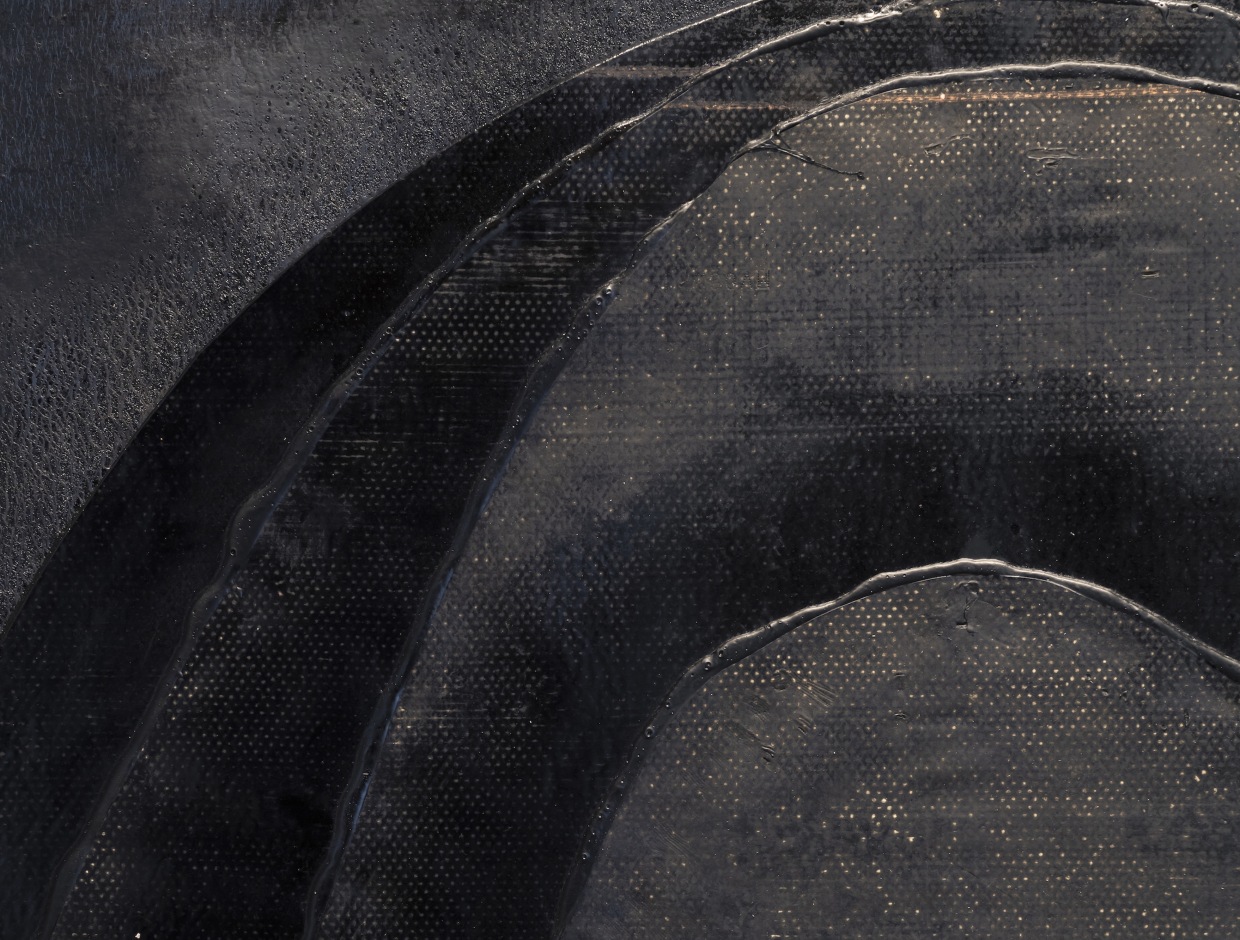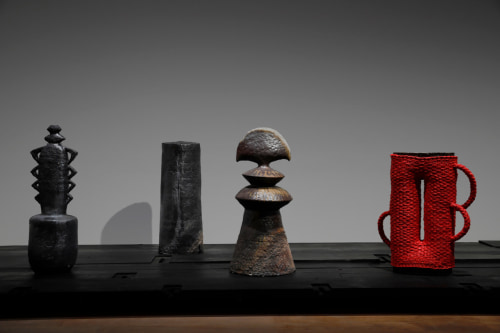

Installation view of Theaster Gates: Afro Mingei, 2024, Mori Art Museum, Tokyo, Japan.
Theaster Gates presents Afro Mingei, his first solo museum exhibition in Japan, opening on April 24 at the Mori Museum of Art in Tokyo.
Afro-Mingei demonstrates the importance of Japanese culture in Gates’s practice. Gates, who has long explored hybridity over the course of his practice, coined the term “Afro-Mingei” to describe his unique speculative framework through which he imagines the creative possibilities in fusing the philosophies of the Japanese Mingei Movement and the aesthetics of the “Black is Beautiful” cultural movement. Gates first traveled to Japan in 2004 to study ceramics in Tokoname, Aichi Prefecture. His deep encounters in Japan and across the Asia-Pacific, coupled with his experiences as an African-American man with roots in Mississippi and Chicago have been the keystones of his creative process.
“For more than 20 years, the Mingei Movement has been an important guidepost for me in understanding the mechanics of celebration associated with the beauty that a people make,” says Gates. “The Mingei Movement, like the Black Power Movement of the United States, was attempting to preserve and honor a very specific past as the west quickly encroached. While both had blind spots, biases and detractors, their resolve was to celebrate the local, raise awareness of beauty and honor the power of culture. Afro-Mingei is an attempt to marry the most significant movements of my artistic journey.” For Gates, “Afro-Mingei” is a fiction yet a deep truth. As the culmination of this project to date, staging a show in the country that gave birth to the Mingei movement so influential in Gates’ art is an homage and testament to the ways that culture proliferates in a country, in the world, and between cultures.
Marking the twenty-year anniversary of his first artistic encounter in Japan, Afro-Mingei demonstrates Gates’s deep investment in the ceramic legacies of Japan which began in 2004, when Gates participated in the International Workshop of Ceramic Art in Tokoname. He continues to honor generational makers, locally significant cultural space and craft histories. The exhibition features works that imagine, amalgamate, and hybridize Black and Japanese historical and cultural elements, including ceramics made in Tokoname, sculptural interventions inspired by Chicago funk music and lounges, a sound installation featuring a church organ, works by late Edo-period poet and ceramic artist Otagaki Rengetsu and new bodies of work anchored by Japanese incense, sake and tea rituals.
A diverse program of events designed to showcase the breadth of Gates’ practice is planned for the duration of the exhibition including sonic and olfactory activations and an off-site installation at the former Earthenware Pipe Factory (Maruri-Toukan) in the city of Tokoname.